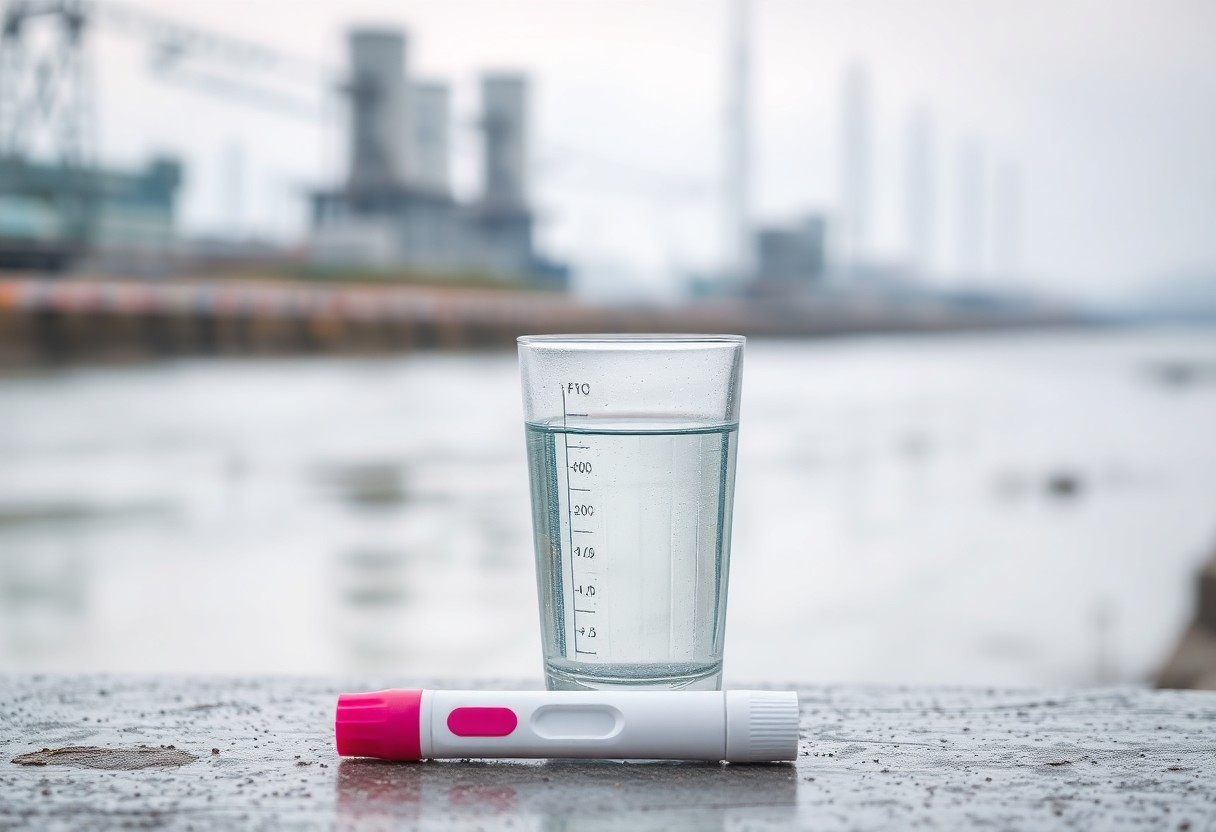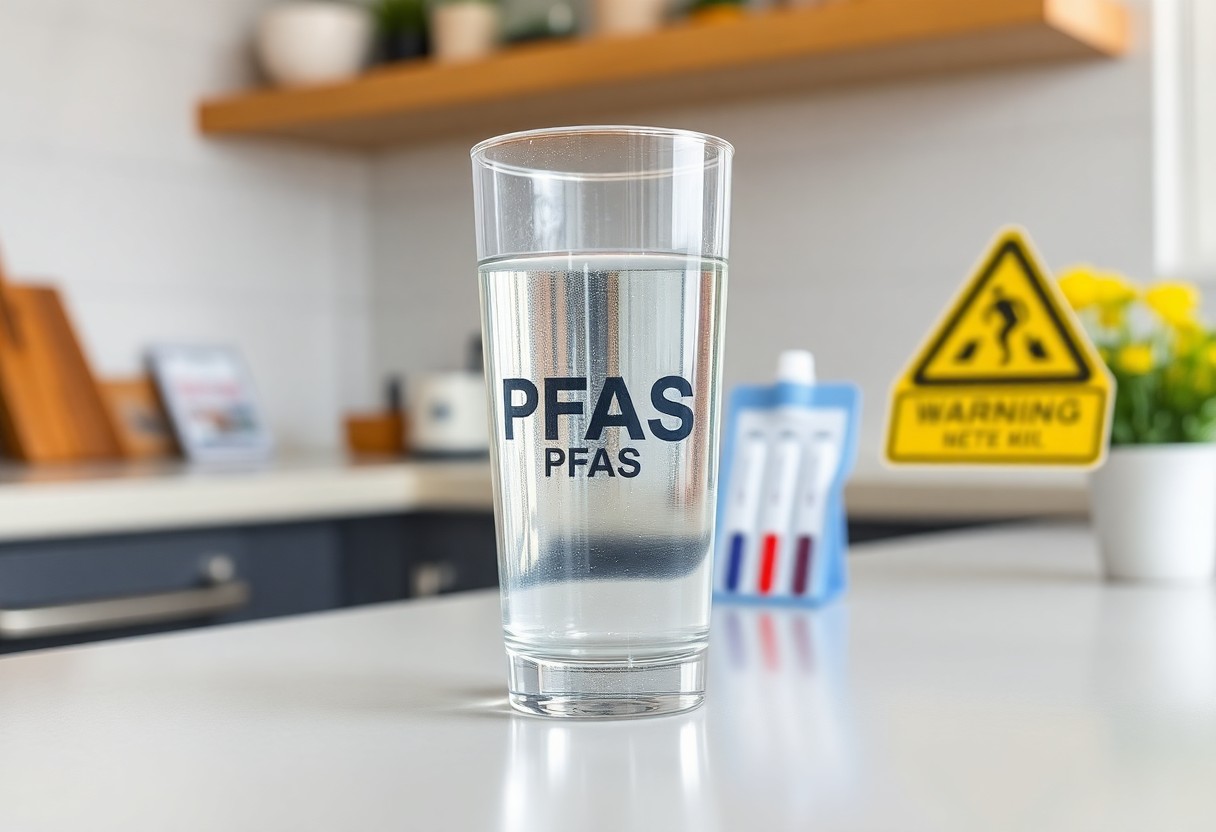Many people are unaware that per- and polyfluoroalkyl substances (PFAS), commonly found in various consumer products, may be lurking in your drinking water. These man-made chemicals can have serious health implications, including links to cancer and immune system disruption. As you pour yourself a glass of water, it’s crucial to understand the potential risks associated with PFAS contamination. This informative blog post will help you uncover the truth about what’s in your glass and how you can protect yourself and your loved ones from these harmful substances.
Understanding PFAS
The rise of PFAS, or per- and polyfluoroalkyl substances, has gained attention due to their widespread use and persistence in the environment. These synthetic chemicals have been utilized in various industries since the 1940s, leading to contamination in air, water, and food, posing potential health risks to you and your community.
Definition and Chemical Structure
Among the myriad of chemicals, PFAS are a group of man-made compounds characterized by a unique carbon-fluorine bond, which gives them remarkable resistance to heat, water, and oil. This structure makes them particularly useful in various applications, but also contributes to their environmental persistence and challenges in breaking down.
Common Sources of PFAS
Below are several common sources of PFAS that you may encounter in your daily life: consumer products like non-stick cookware, water-repellent fabrics, food packaging containing grease-resistant substances, and contaminated drinking water supplies. These sources can contribute to your exposure to PFAS.
The wide-ranging applications of PFAS highlight their prevalence in everyday items. For instance, non-stick cookware can leach PFAS into food, while water-resistant clothing may release these chemicals during washing. Additionally, food packaging, such as takeout containers, often contains PFAS to resist grease, posing further risks. Importantly, many water systems, particularly near military bases or industrial sites, have been found to be contaminated, increasing the likelihood of your exposure. Being aware of these sources can empower you to make informed choices in the products you use and the water you consume.
Health Impacts of PFAS
Now that we understand what PFAS are, it’s crucial to recognize their potential health impacts. Exposure to these chemicals has been linked to various health issues, including immune system dysfunction, hormonal disruption, and increased cholesterol levels. Understanding these risks can help you make informed choices about the products you use and the water you consume.
Short-Term Effects
Below are some of the immediate effects you may experience from PFAS exposure. These can include skin irritations, recurring infections, and gastrointestinal discomfort. While these symptoms may vary in severity, being aware of them can aid you in identifying potential sources of exposure.
Long-Term Health Risks
Among the more alarming risks associated with PFAS exposure are the long-term health issues that may develop over time. Chronic exposure to PFAS has been linked to serious conditions such as kidney cancer, testicular cancer, and thyroid disease. These health implications could significantly impact your quality of life as well as your overall well-being.
For instance, PFAS exposure has been linked to an increased risk of developing certain types of cancer, including kidney and testicular cancer. Additionally, studies suggest that long-term exposure may lead to metabolic issues like obesity and type 2 diabetes. Furthermore, these chemicals have the potential to disrupt thyroid function, which plays a vital role in your body’s metabolism. Being informed about these serious health risks can empower you to take proactive steps in reducing your exposure to PFAS and protecting your health.
PFAS in Drinking Water
It is necessary to be aware of the presence of PFAS in drinking water, as these persistent chemicals can pose significant health risks. Various sources, including industrial processes, wastewater discharge, and firefighting foam, contribute to the contamination of water supplies. As they do not easily break down, PFAS can accumulate in the environment and enter your tap water, ultimately affecting your well-being.
How PFAS Contaminates Water Sources
One major pathway for PFAS to enter water sources is through industrial runoff and improper disposal practices. Manufacturing facilities that produce or use PFAS compounds can release these chemicals into nearby rivers and lakes, while contaminated groundwater can seep into local drinking water systems, putting you at risk for exposure.
Regulations and Safety Standards
For many years, PFAS regulation has lagged behind the growing concern surrounding their impact on health. Various governmental agencies are now working to establish safety standards for PFAS levels in drinking water, aiming to protect your health and the environment. However, regulatory frameworks can vary significantly across states, leading to inconsistent safety measures.
It is vital for you to stay informed about regulations regarding PFAS levels in your drinking water. Recent efforts by agencies like the Environmental Protection Agency (EPA) focus on setting enforceable limits while investigating the health impacts of long-term exposure. Testing programs and community outreach are crucial in raising awareness and ensuring the safety of your drinking water. Without these measures, the risks associated with PFAS can remain hidden, jeopardizing your health and wellbeing.
Testing for PFAS
All individuals concerned about PFAS contamination in their water supply can benefit from testing. Testing laboratories use specialized procedures to detect the presence of PFAS compounds in various samples, allowing you to understand the safety of the water you consume and ensure it meets regulatory standards.
Methods of Detection
Against the backdrop of growing public concern, several methods exist for detecting PFAS in water samples. These include High-Performance Liquid Chromatography (HPLC) and Mass Spectrometry (MS), which are highly effective for analyzing complex mixtures. Utilizing these techniques can provide you with accurate information about PFAS levels present in your water supply.
Interpreting Test Results
Across various testing scenarios, understanding your PFAS test results is crucial. If you receive reports indicating measurable levels of PFAS, it’s vital to compare these numbers with regulatory limits set by governmental organizations. Higher levels of these chemicals may pose significant health risks, prompting you to consider water filtration options or alternative sources to reduce exposure.
Methods of interpreting PFAS test results include identifying the specific types of PFAS present and their concentrations. Levels exceeding EPA guidelines for PFAS should raise alarms, indicating potential risks to your health and local environment. Additionally, it’s crucial to differentiate between various PFAS compounds, as some may be more harmful than others. Ultimately, your health and safety can be significantly enhanced by staying informed and taking appropriate actions based on your test results.
Reducing PFAS Exposure
Not all drinking water is contaminated with PFAS, but it’s wise to take steps to minimize your exposure. Start by educating yourself about the sources of PFAS in your environment. Choose products that are labeled as free from these chemicals, and remain vigilant in seeking out alternatives in your everyday life. By understanding potential sources and making informed choices, you can significantly reduce your risk of PFAS exposure.
Water Filtration Options
Any homeowner concerned about PFAS can explore various water filtration options. Technologies such as activated carbon filters, reverse osmosis systems, and ion exchange units have shown effectiveness in reducing PFAS levels in drinking water. Research the products in your local market and confirm their capabilities by referring to independent testing results before making a purchase.
Safe Practices for Consumers
For optimal health, you should adopt safe practices to reduce your exposure to PFAS. This includes being careful with food packaging and avoiding non-stick cookware that may contain these harmful substances. Check your personal care products for ingredients that may harbor PFAS, and consider using glass or stainless steel containers instead of plastic.
Another strategy involves reading labels and making conscious choices when shopping. Look for eco-friendly products and those specifically marketed as free from PFAS. Be cautious with fast food and takeout, as many food wrappers can contain these chemicals. When possible, opt for fresh or unpackaged foods to minimize your exposure. By implementing these practices, you can help protect yourself and your family from the potential dangers of PFAS.

Ongoing Research and Developments
Keep an eye on the evolving landscape of PFAS research, as scientists and regulatory agencies work tirelessly to understand the long-term effects of these substances on human health and the environment. Innovative methods for detecting and removing PFAS from drinking water are being explored, and emerging studies shed light on how exposure impacts your health. This ever-growing body of research is vital for developing safe practices and policies moving forward.
Current Studies on PFAS
Behind the scenes, numerous studies are examining the bioaccumulation of PFAS in wildlife and its potential impacts on ecosystems. Researchers are using advanced analytics to track the presence of PFAS in soil, water, and even human blood samples. These studies aim to provide a comprehensive understanding of the risk PFAS pose not only to you but also to your community.
Future Directions in PFAS Regulation
Alongside ongoing research, experts are focusing on shaping future regulations concerning PFAS. Policymakers are increasingly recognizing the need for stricter limits on these substances in water supplies. Your voice can influence these changes, encouraging legislators to take decisive action to protect public health and the environment.
Also, new regulations could include mandatory testing for PFAS levels in drinking water and establishing more stringent thresholds for acceptable limits. The potential establishment of federal guidelines would create a uniform standard for all states, ensuring that your water is safe and free from harmful PFAS levels. Such progress reflects a growing awareness of PFAS risks and empowers you to advocate for solutions that prioritize public health and environmental safety.
Final Words
Following this exploration of PFAS, you should be aware of the potential risks these substances pose and their prevalence in everyday products. Understanding what’s in your glass can empower you to make informed choices regarding your health and environmental impact. By staying educated and proactive, you can seek safer alternatives and advocate for stronger regulations to protect yourself and your community from the adverse effects of PFAS contamination.





















